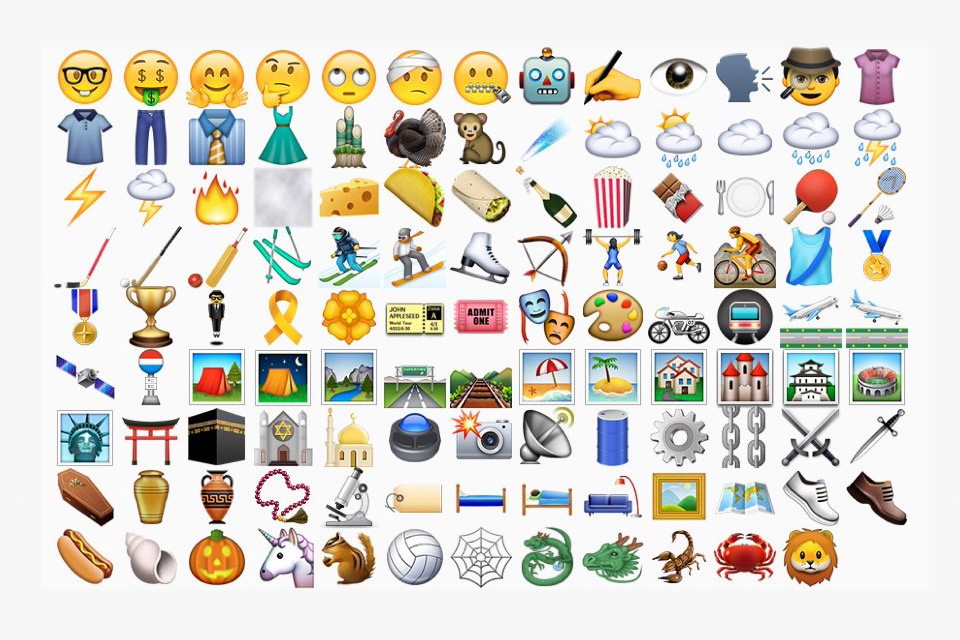Last week Apple introduced stickers and automatic emoji to its popular iMessage chat app.
Neither are new to chat platforms. But the move will introduce a large swath of smartphone users to a world where pictures are worth, if not a thousand words, at least a few of them when screen real estate and time are of the essence.
Stickers, if you are unaware, are relatively large cartoonish images which can be inserted into conversations in lieu of, or along with, words.
There are lots of free sticker sets already available. You can download packs of old school emoticons, hand gestures and goofy characters. Some are free, some cost a couple of dollars. And, Canadian companies like Tim Hortons, Canadian Tire and Westjet have created sticker sets. So, rather than asking your pal whether he or she would like to go to Tim’s for a coffee, you can just send a cartoon image of a double-double.
Stickers can also be applied to images you’ve already posted in a chat. A selfie you plan to send can be adorned with a silly hat or a cartoon smile.
Emojis have been around since the late 1990s when Japanese carriers introduced them on their network’s phones. The graphic smiley — a more graphic representation of a 🙂 — became popular around the same time internationally.
Apple has made emojis easier to use by allowing users to type a message and then let their iPhone suggest emojis for applicable words in a sentence. It’s like the phone creating an automatic rebus.
In all cases the symbols are meant to either replace words or phrases or give them a greater range of expression. And, emoji use has developed as its own language, much like American Sign Language. Whole conversations can be carried on using only the expressive symbols.
Worldwide, emojis have literal meanings: birthday cake, woman or sun. But many symbols sport hidden meanings, especially sexual ones.
The eggplant, for example, is substitute for penis, a happy whale, shooting water from his blowhole, a male climax, etc. There are, of course, female equivalents. Ask around.
A lot of folks, especially older ones, find the idea of using stickers or emoji in chat infantile and annoying.
But, in fact, they can sometimes indicate the intention of words much better than the words alone can. In chat, as in email, a great deal of tone, humour and subtly is lost between the cup and lip of digital communications.
This isn’t the first time writers have searched for symbols or special characters to express the nuance of a phrase. The quest has been underway for centuries before the smartphone.
One of the most longstanding and fruitless attempts has been the search for a way to convey irony in text.
The first effort was by the English natural philosopher John Wilkins. In 1668 he argued that an inverted exclamation mark should connote the inverted meaning of an ironic statement.
In 1899 the poet Marcel Bernhardt suggested a whip-shaped glyph for the same purpose. Neither ideas nor a half dozen others caught on. The best we have, and it represents sarcasm not its more genteel and ironic cousin, irony, is the winking smiley emoticon.
But even the idea of the emoticon presages the Internet. In 1881 the American satire magazine Puck published a series of faces the publication’s typesetter made as a joke. The faces displayed joy, melancholy, sadness and a few more emotions.
The point is this: if you want to look to the exact point emoticons or special characters were introduced into language to improve it, you have to travel far back in time, not pick on stickers.
And the ideograms of Chinese, Egyptian and Sumerian texts all demonstrate how powerful a picture-based language can be.
If you look at it that way maybe all we’ve really done is come full circle: one with two dots and an optimistic arc inside.
Listen to an audio version of this column, read by the author.
Wayne MacPhail has been a print and online journalist for 25 years, and is a long-time writer for rabble.ca on technology and the Internet.
Image: francisco toquica/flickr
Like this article? rabble is reader-supported journalism. Chip in to keep stories like these coming.




